Over the last 3 years CollectA has produced FIVE extinct cephalopods spanning the geologic ages between the Ordovician and the Cretaceous. A magnificent achievement that appears to have come to an end, for alas, no cephalopod has been announced for 2023. But do not despair, with figures of Koolasuchus and Anomalocaris on the horizon CollectA is continuing their streak of releasing the most diverse and interesting assortment of prehistoric critters of any mainstream company. For many consecutive years now CollectA has proven to be the most exciting company to watch for collectors that want more than just dinosaurs adorning their shelves.

This year we got a Cooperoceras from CollectA, a member of the Tainoceratidae family within the Nautilida order. The Nautilida order persists today with members of the genus Nautilus and Allonautilus. Incidentally, CollectA made a Nautilus too for their prehistoric line but since they’re extant you’ll have to check out the other blog for a review of it. Cooperoceras lived during the Permian in what is now North America and Europe. The type species, C. texanum, was discovered in Texas and described in 1945. Cooperoceras would have had a shell about 4” (10 cm) long and 3” (7.5 cm) tall so that puts the CollectA figure close enough to 1/1 scale.
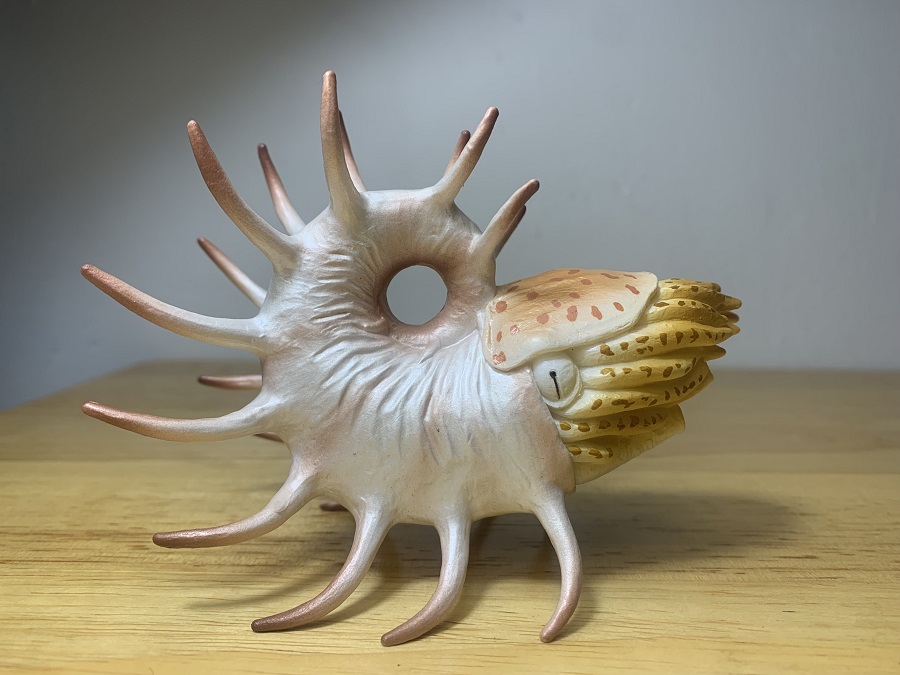
The CollectA Cooperoceras was clearly designed with the extant Nautilus in mind. With a cluster of “tentacles” numbering many more than the 8-10 appendages of coleoid cephalopods (squids, octopuses, and cuttlefish) it is visually more like its closer relatives. Nautilus have between 60-90 “tentacles” that are technically called cirri. Like the cirri of a Nautilus, those on the figure also lack any pads or suckers. The CollectA Cooperoceras also has a sculpted hood and siphon (hypernome) which it would use to move about by jet propulsion. Again, like a Nautilus.
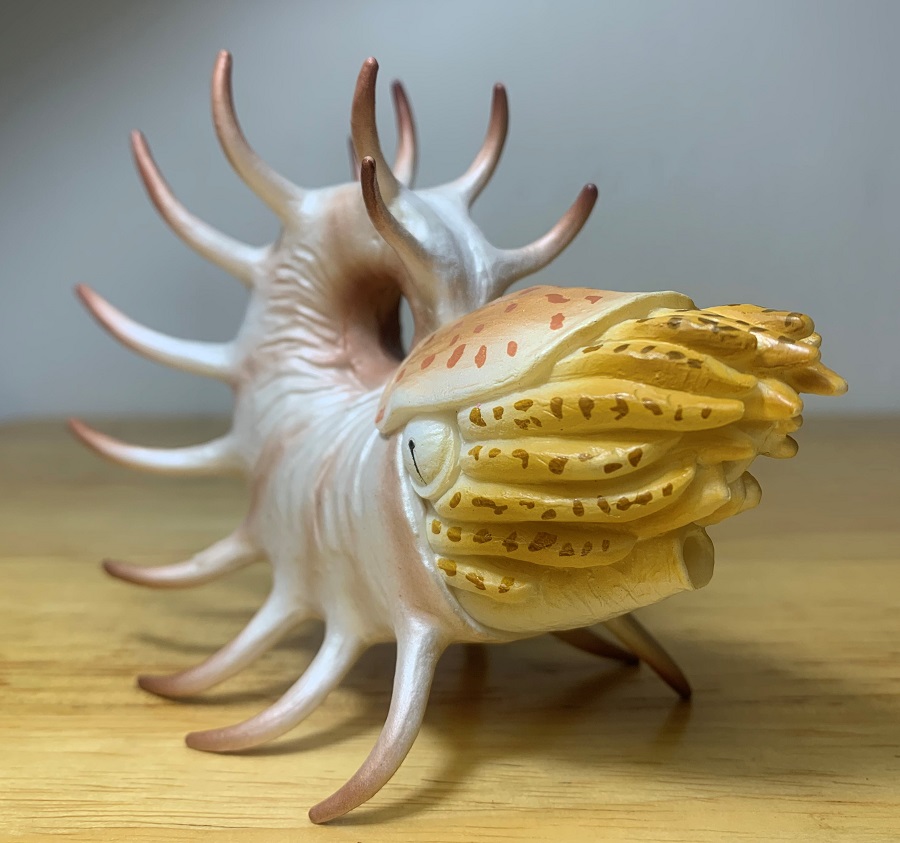
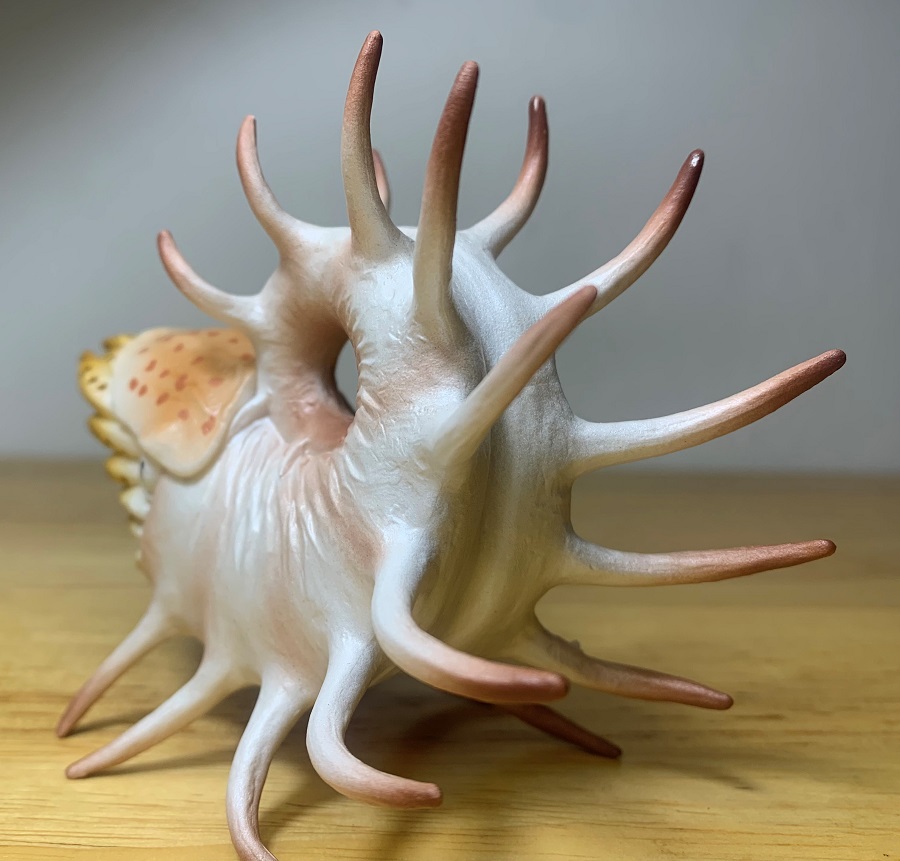
With its visually distinctive shell, it’s no wonder CollectA decided to make a Cooperoceras to add to their assortment of cephalopods. It certainly stands out in the crowd. The shell is rounded, like a Nautilus or ammonite but with an open hole, making it look like a curled tail or unfinished spiral. Along the edges of the shell are a series of curved spines that in life would have been hollow. A shallow groove is sculpted along the underside of the shell. Overall, it looks very much like the actual fossils of Cooperoceras, or what few images there are of it on Google. Most of the Google images of Cooperoceras are of this toy.
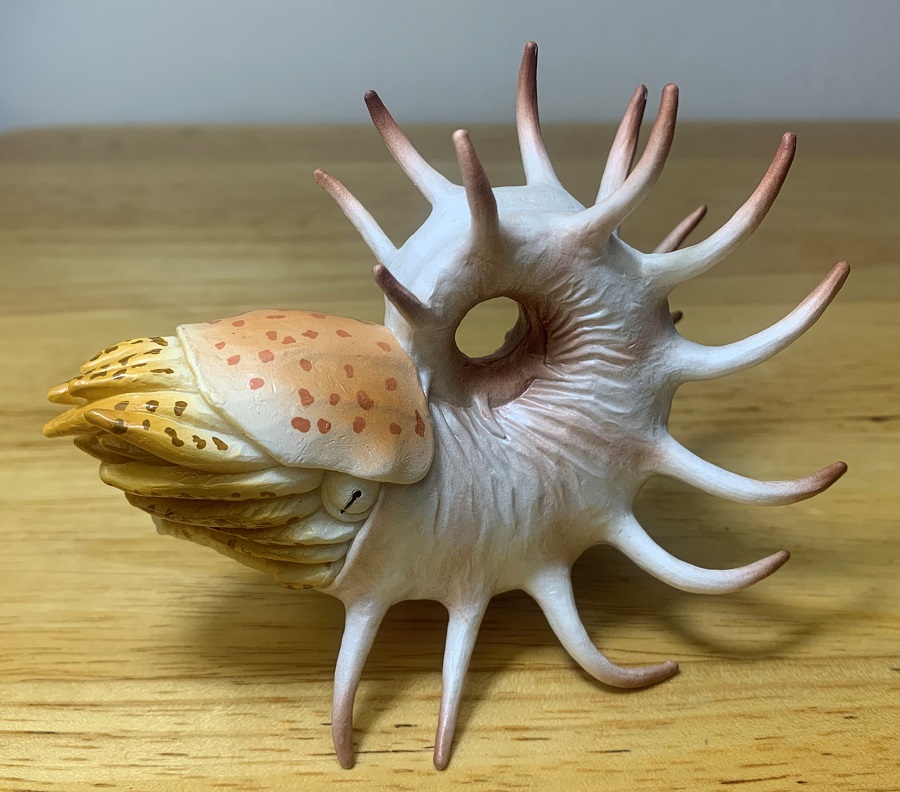
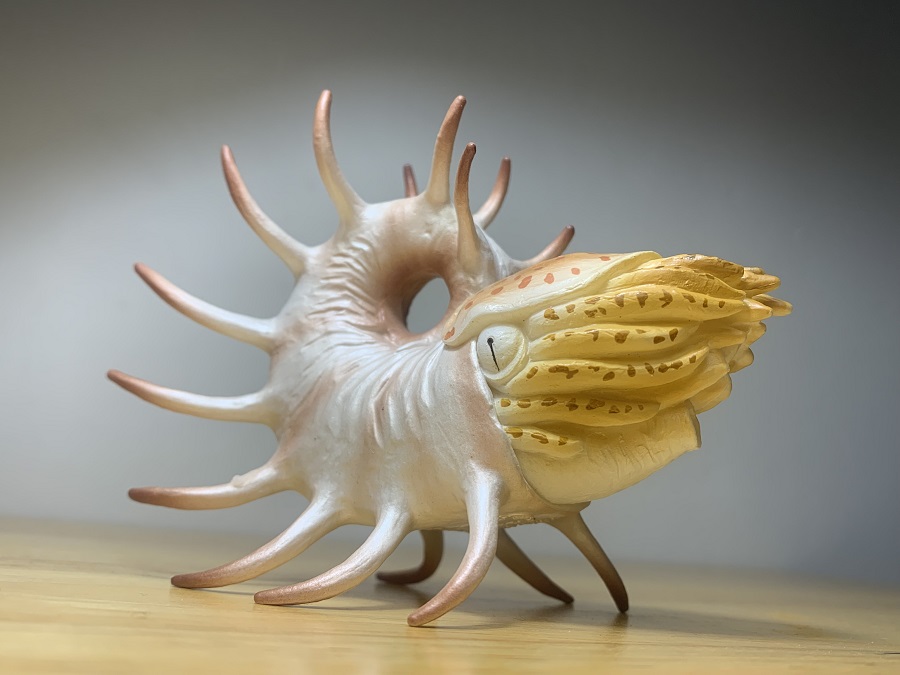
Similarities with a Nautilus also extend onto the paintjob. The cirri are pale orange and white with brown spots. The hood is pink and fades to white along its edges with darker pink spots. The shell is truly magnificent, with pearl-like opalescence and a blended white and pale pink color scheme. The eyes are painted to look like the simple pinhole eyes of a Nautilus. Nautilus do not have great vision so I suppose in the case of the CollectA figure we can assume that Cooperoceras doesn’t either. I guess that means that the spines are more for defense than display.
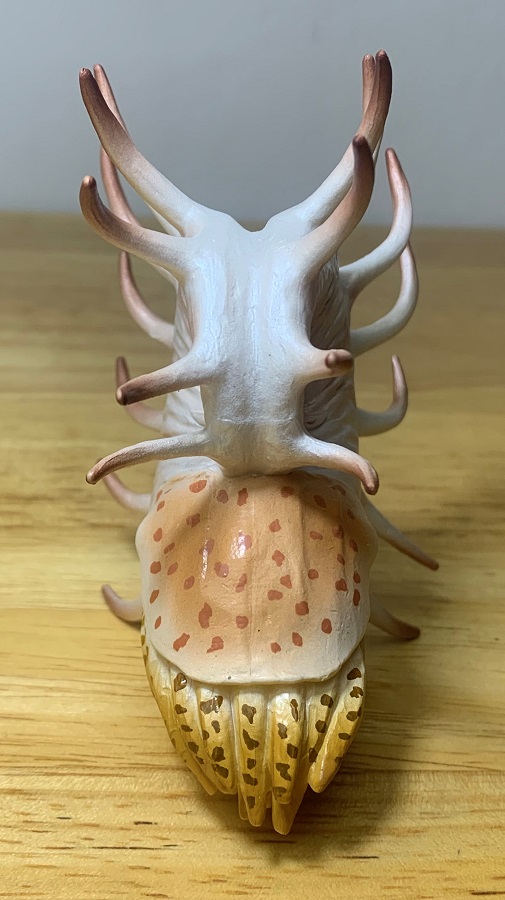
Whether or not this Cooperoceras is the last cephalopod we get from CollectA I am still ecstatic to have even just five of these marvelous animals displayed together on my shelf. Together they represent a highlight in my collection and if the Cooperoceras is the last to join it we’re without question leaving on a high note. In picking their cephalopods CollectA has been smart in selecting genera that are all visually distinct from each other so that each one stands out and still compliments the rest. I do suspect that we’ll see more cephalopods from CollectA in the future, and I’m personally hoping for a standard size figure of their mini Diplomoceras. Only time will tell but as long as they keep pumping out these obscure animals, they’ll have my attention. The CollectA Cooperoceras is new for 2022 and retails for about $10.
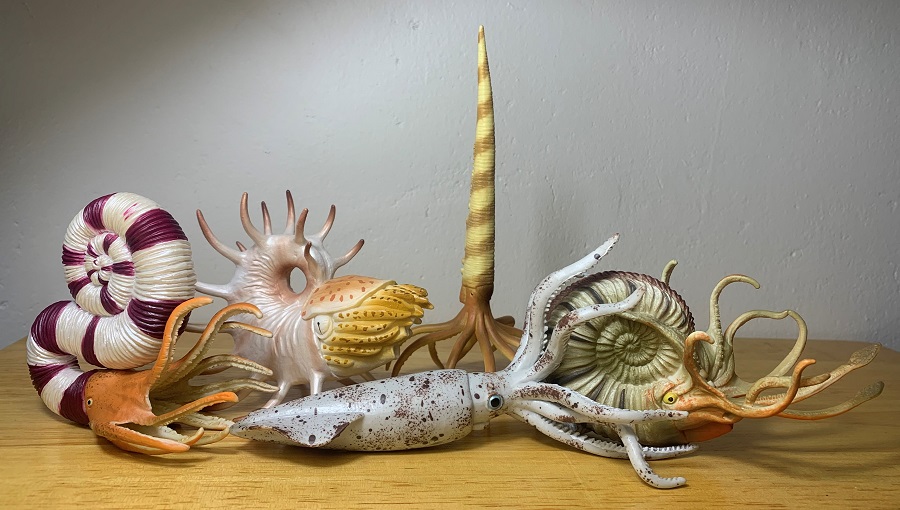
Disclaimer: links to Ebay and Amazon on the DinoToyBlog are affiliate links, so we make a small commission if you use them. Thanks for supporting us!




How often it is that nature produces something you’d expect to see only in science fiction. Thanks for the review! I’m terribly behind on Collecta’s cephalopods but I certainly appreciate Collecta for producing them all the same.
I’ve looked through a digital museum database for specimen photos, and while there are many specimens, they are all broken in various ways. So I guess it’s no surprise this figure is already dominating image search! Very cool and distinctive figure, thanks for a great review!
Seems like the sort of critter that would be hard to preserve intact.
Wonderful review of this amazing model and animal. So glad that CollectA did a series of invertebrates, giving this much neglected group a much needed time in the spotlight.
I hope that we would still get an occasional one in the future.
All together, they make a stunning display.
I actually drilled a small hole under each figure and inserted a clear rod to hold them up and attached the rod on a wooden base, worked really well.
Thank you! That’s a clever idea for displaying them, although for the time being I’m find with them just resting flat on the shelf.
I keep mined suspended on a LEGO base so that the bottom spikes don’t warp.
That’s probably a good idea. I have some spare PNSO stands that could probably do the trick too.
Lovely review of a lovely model, thank you! Special shout out to the pearly, iridescent paint on the shell of this critter – it quite literally makes it shine amongst other sea dwellers.
Thank you! Yes, the iridescence really makes it pop.